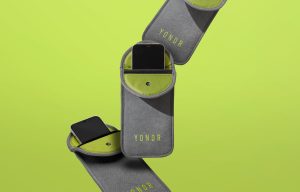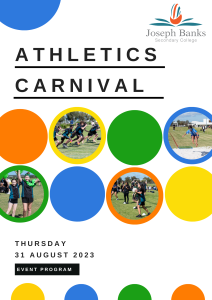Design (Graphic Design) (General)
Course Code: GEDES/GTDES
Domain: The Arts
Timetable: Semester 1 and 2
Length of Course: 2 Years
Unit Information
‘Design is the human power to conceive, plan, and realise products that serve human beings in the
accomplishment of any individual or collective purpose.’ (Richard Buchanan, Carnegie Mellon University)
Design involves the strategic development, planning and production of visual and tactile communication. It
deals with the effective and efficient communication of ideas, values, beliefs, attitudes, messages and
information to specific audiences for specific purposes and with specific intentions.
Design has its own set of theories and practices and incorporates a wide range of principles, methods and
techniques drawn from a variety of different disciplines such as psychology, communication studies, digital
design, technical graphics, art, engineering, architecture, sociology, cultural studies, marketing and
economics. The disciplined application of these elements forms a design process that guides the
development of creative and functionally effective solutions to identified possibilities or problems.
We live in a diverse and constantly changing information-rich society and culture, constantly immersed in
design communication. Sometimes the intention of design is to inform, express, educate or entertain. Often
the intention is also to influence or persuade. An understanding of design and how it works can enhance an
individual’s ability to interact with their environment, to learn from it and to grow within it. It also empowers
the individual by making them more discerning of, and therefore less susceptible to, manipulation and
influence via design.
The goals of the Design (General) course are to facilitate a deeper understanding of how design works; and
how ideas, beliefs, values, attitudes, messages and information are effectively communicated to specific
audiences with specific intentions or purposes via visual media forms. This course aims to achieve these
goals by exposing students to a variety of communication forms and a thorough exploration of design.
Design projects allow students to demonstrate their skills, techniques and application of design principles
and processes; to analyse problems and possibilities; and to devise innovative strategies within design
contexts. There is potential for students to develop transferable skills and vocational competencies while
devising innovative designs.
In this course, students develop a competitive edge for current and future industry and employment
markets. This course also emphasises the scope of design in professional and trade based industries allowing
students to maximise vocational and/or university pathways.
Year 11
Unit One
Product Design – Students learn that the commercial world is comprised of companies requiring consumer products, services, and brands for a particular audience. They are introduced to the concept of intellectual property. They create products/services, visuals and/or layouts with an understanding of codes and conventions. They use relevant and appropriate production skills and processes, materials, and technologies relevant to the design.
Projects can include:
- corporate gift package, product labelling and package design for drink/food company, t-shirt design and swing tag/packaging, calendars, festival event program, surfboard surface graphics and/or advertisement, tote bag and/or postcard design.
Ideas can be applied to:
- logos, branding, web page, posters, surf/skateboard illustration layout, product concepts, and book/magazine covers such as comic books and graphic novels and illustrations for a book/CD/game cover or 3Dcartondesign.
Unit Two
Cultural Design – Students learn that society is made up of different groups of people who share diverse values, attitudes, beliefs, behaviour and needs and that different forms of visual communication transmit these values and beliefs. Students are encouraged to create designs that link to a culture or sub-culture and are introduced to ethical issues concerning representation. Students develop a design process with an understanding of codes and conventions. They analyse communication situations and audience. They define and establish contemporary production skills and processes, materials, and technologies.
Projects can include: new band/ music promotional material, logo and promotional material for a non-for-profit organisation, hobby/ sports/ interest-based, T-shirt illustration, book front cover redesign or illustration design for educational children’s story, skateboard designs and advertisement for a particular sub-culture, horoscope symbols for a specific magazine, theme or issue inspired book/magazine/comic book covers, illustrated cover pages-teen novel/genre, game cover, musical theatre poster
Year 12
Unit Three
The focus of this unit is product design. Students learn that the commercial world is comprised of
companies, requiring consumer products, services and brands for a particular audience. They are introduced
to the concept of intellectual property. Using the design process, they create products/services, visuals
and/or layouts with an awareness of codes and conventions. They use relevant and appropriate production
skills and processes, materials and technologies relevant to the design.
Unit Four
The focus of this unit is cultural design. Students learn that society is made up of different groups of people
who share diverse values, attitudes, beliefs, behaviours and needs, and that different forms of visual
communication transmit these values and beliefs. Students are encouraged to create designs that link to a
culture or sub-culture and are introduced to ethical issues concerning representation. Students develop a
design process with an understanding of codes and conventions. They consider communication strategies
and audience. They define and establish contemporary production skills and processes, materials and
technologies.
Pathway Information
Tertiary
Workforce
Students undertaking this course may wish to consider tertiary studies in:
- Graphic Design
- Fine Arts
- Bachelor of Arts
- Diploma of Visual Arts
This course suits direct workforce entry into the following:
- Artist
- Web Designer
- Multimedia Developer
Additional Information
Estimated Charges: $120 per year


